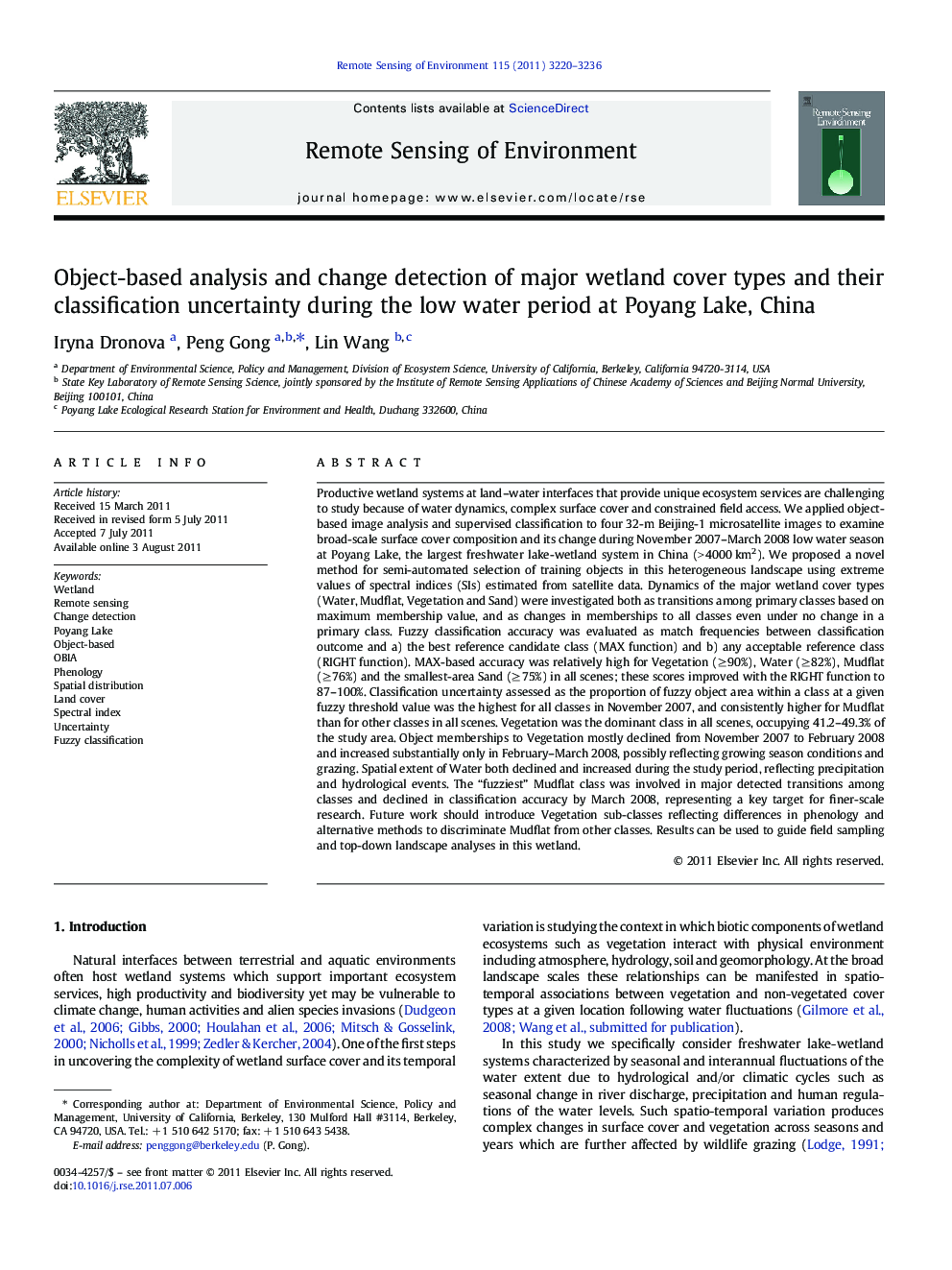| کد مقاله | کد نشریه | سال انتشار | مقاله انگلیسی | نسخه تمام متن |
|---|---|---|---|---|
| 4459472 | 1621285 | 2011 | 17 صفحه PDF | دانلود رایگان |

Productive wetland systems at land–water interfaces that provide unique ecosystem services are challenging to study because of water dynamics, complex surface cover and constrained field access. We applied object-based image analysis and supervised classification to four 32-m Beijing-1 microsatellite images to examine broad-scale surface cover composition and its change during November 2007–March 2008 low water season at Poyang Lake, the largest freshwater lake-wetland system in China (> 4000 km2). We proposed a novel method for semi-automated selection of training objects in this heterogeneous landscape using extreme values of spectral indices (SIs) estimated from satellite data. Dynamics of the major wetland cover types (Water, Mudflat, Vegetation and Sand) were investigated both as transitions among primary classes based on maximum membership value, and as changes in memberships to all classes even under no change in a primary class. Fuzzy classification accuracy was evaluated as match frequencies between classification outcome and a) the best reference candidate class (MAX function) and b) any acceptable reference class (RIGHT function). MAX-based accuracy was relatively high for Vegetation (≥ 90%), Water (≥ 82%), Mudflat (≥ 76%) and the smallest-area Sand (≥ 75%) in all scenes; these scores improved with the RIGHT function to 87–100%. Classification uncertainty assessed as the proportion of fuzzy object area within a class at a given fuzzy threshold value was the highest for all classes in November 2007, and consistently higher for Mudflat than for other classes in all scenes. Vegetation was the dominant class in all scenes, occupying 41.2–49.3% of the study area. Object memberships to Vegetation mostly declined from November 2007 to February 2008 and increased substantially only in February–March 2008, possibly reflecting growing season conditions and grazing. Spatial extent of Water both declined and increased during the study period, reflecting precipitation and hydrological events. The “fuzziest” Mudflat class was involved in major detected transitions among classes and declined in classification accuracy by March 2008, representing a key target for finer-scale research. Future work should introduce Vegetation sub-classes reflecting differences in phenology and alternative methods to discriminate Mudflat from other classes. Results can be used to guide field sampling and top-down landscape analyses in this wetland.
► We present wetland object-based analysis and change detection at Poyang Lake, China.
► We propose novel methods to select training objects and analyze class uncertainty.
► Important fuzzy membership changes were detected even with no primary class change.
► Changes in Vegetation class membership reflected grazing and temperature variation.
► The fuzziest Mudflat class was sensitive to flooding and needs finer-scale research.
Journal: Remote Sensing of Environment - Volume 115, Issue 12, 15 December 2011, Pages 3220–3236